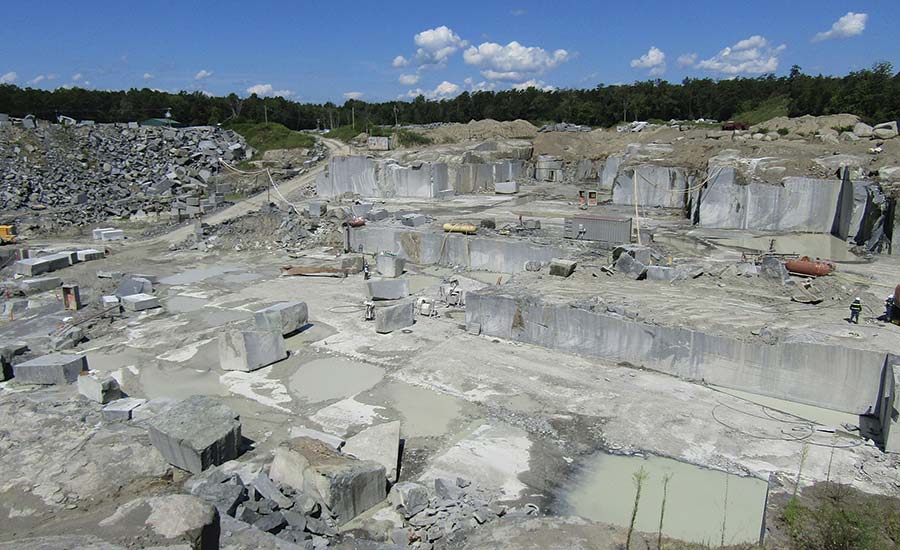A Trip With Granite Quarries in South Africa: Unveiling Nature's Artistry
A Trip With Granite Quarries in South Africa: Unveiling Nature's Artistry
Blog Article
Discovering the Rich Background and Sustainable Practices of Granite Quarrying
As we stand on the precipice of uncovering the complex tapestry of granite quarrying, a trip with time exposes not simply the physical act of extracting rock but additionally the cultural and historical significance woven into the extremely material of this method. From the ancient beginnings that laid the foundation for modern-day quarrying techniques to the lasting techniques that are shaping the future of this industry, each carve mark on granite surface areas informs a tale waiting to be discovered (granite quarries in south africa). The tradition of granite quarrying stretches much past simple removal; it is a testament to human resourcefulness, resilience, and the long-lasting allure of this impressive stone
Ancient Origins of Granite Quarrying
Dating back to old civilizations, the technique of quarrying granite has been an integral part of human history and architectural advancement. The earliest evidence of granite quarrying go back to ancient Egypt, where large pyramids and elaborate sculptures were crafted from this sturdy rock. The Egyptians made use of primitive devices to remove granite blocks from quarries, showcasing the importance of this product in their monumental building and constructions.
Moving on in history, the Greeks also made substantial payments to the quarrying of granite. The Greeks used granite in numerous building marvels, such as holy places and statuaries, demonstrating their ability in shaping and carving this sturdy stone. The Romans additionally fine-tuned the methods of quarrying granite, employing sophisticated devices like blades and hammers to remove and shape granite for their renowned structures.
Via the centuries, the practice of quarrying granite has developed, with modern technologies improving efficiency while preserving the ageless allure of this all-natural stone - granite quarries in south africa. From ancient civilizations to modern builders, the heritage of granite quarrying remains to form our globe
Development of Quarrying Methods
The advancement of quarrying techniques has actually been noted by a continual progression towards higher performance and accuracy in drawing out granite. Early quarrying strategies involved hand-operated labor with basic devices such as blades, hammers, and wedges to remove granite blocks from the planet.
In more current times, the development of equipment transformed the quarrying sector, allowing faster removal rates and enhanced productivity. Technologies such as diamond cord saws, high-pressure water jets, and pneumatic drills have actually come to be common in modern quarries, permitting for specific cutting and minimized waste. Innovations in computer-controlled equipment and 3D modeling have optimized quarrying operations, leading to very little environmental influence and improved sustainability methods. As the need for granite proceeds to increase, the get more development of quarrying methods stays indispensable to conference sector requires effectively and sustainably.
Social Value of Granite
Granite holds a profound social significance across numerous civilizations because of its long-lasting presence in building work of arts and prized monuments. From the magnificent pyramids of Egypt to the intricate carvings of the Angkor Wat holy place in Cambodia, granite has been a material of option for sharing splendour and longevity in cultural heritage. In ancient Rome, granite columns decorated temples and public buildings, signifying stamina and permanence. The social relevance of granite prolongs past its physical features; it symbolizes resilience, security, and timelessness, making it an icon of withstanding legacies and customs.

Sustainable Practices in Quarrying
Among the rich history of granite quarrying and its social importance lies an expanding focus on sustainable techniques within the market. As environmental recognition and issues about source depletion have actually increased globally, the quarrying field has increasingly accepted sustainable approaches to reduce its influence on the atmosphere and bordering neighborhoods.

Furthermore, reclamation and rehab of quarry sites post-extraction are essential to sustainable practices. By restoring quarried areas to a natural or beneficial state, such as creating wild animals environments or entertainment areas, quarriers can balance out the environmental footprint of their procedures and add favorably to the regional community.
Legacy of Granite Quarrying
With a historical background soaked in craftsmanship and industrial progression, what sustaining effect has granite quarrying from this source left on the landscape of modern culture? The heritage of granite quarrying transcends mere removal techniques; it has shaped building marvels, urban landscapes, and social heritage worldwide. The long lasting nature of granite has made it a recommended option for monuments, structures, and facilities, standing as a testament to the ability and creativity of quarry workers throughout generations.
Furthermore, the economic impact of granite quarrying can not be neglected. The market remains to give work opportunities and drive neighborhood economic climates in regions where granite removal prevails. It has actually likewise stimulated technological innovations in quarrying methods and equipment, causing more reliable and sustainable techniques.
In terms of sustainability, the legacy of granite quarrying consists of initiatives to mitigate environmental influences through reclamation jobs and liable resource management. By balancing financial passions with environmental stewardship, the industry aims to make certain that future generations can remain to take advantage of this long-lasting natural deposit.
Conclusion

Report this page